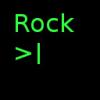Now that I have done just a little bit of searching it seems that using raytracing in a video game is not a good choice unless everyone is using a server farm to play the game.
Hence why I mentioned pre-calculating the lookup projection.
Your camera, by the constraints you gave us, is at a fixed viewing angle, and a fixed distance from the "sphere" you want to move around over. The only object it is viewing is a single sphere, onto which you are going to project a small portion of a flat 2D map. So, you only have to do one frame worth of raytracing, and then remember the U,V coordinates that each on-screen pixel got cast to (or "none", if it cast to not intersecting with the sphere at all). To render each frame, you then walk the screen, read the U,V coordinate (or lack thereof) for each pixel, apply a translate/rotate matrix to that U,V coordinate (rotating around only the axis from the center of the sphere to your camera, so this is only a 2x2 or 3x3 matrix), and then sample the texel at that coordinate of your map. This would be very cheap as a fragment shader applied to a single full-screen quad.
It's not real-time ray-tracing, because you're not performing a full scene traversal and lighting analysis every pixel, every frame. Your "scene" is actually static; an unmoving sphere and an unmoving camera. You'll be doing only a simple U/V transform for each pixel, each frame.
However, it is also sounding like you're quite new to graphics programming in general, not just OpenGL. You'll want to master a simple flat 2D tilemap first, then try projecting a view of it that is bent down at the edges to make it look like the map is curved onto a sphere. If you are already well-versed in shader programming, then you could probably dive straight in to the technique above, though.
RIP GameDev.net: launched 2 unusably-broken forum engines in as many years, and now has ceased operating as a forum at all, happy to remain naught but an advertising platform with an attached social media presense, headed by a staff who by their own admission have no idea what their userbase wants or expects.Here's to the good times; shame they exist in the past.





